New Commercial Real Estate Investment Software – When to Make the Leap
What factors hold you back from making decisions on new business systems? Have you been holding back from upgrading to commercial real estate investment software? Let’s take a look at the common causes of inaction and how to address those fears.
The case for leaping forward with specialized commercial real estate investment software
Without a doubt, there has to be justification for transitioning to new business systems before arguing when to make the transition. To that end, we have previously made a case for new business systems. Not utilizing the right tools can strangle a business, severely reducing responsivity and profit. Interestingly, Forbes Technology Council lists 11 signs your software is due for a major update. Let’s dig specifically into the key reasons you should move forward with commercial real estate investment software designed for your business.
Centralized business data

Sources of data are everywhere now – in leases, abstracts, offers, contracts, agreements, invoices, term sheets, building operations and many others. The issue isn’t the quantity of data that can be collected. Instead, the issues with data collection and use are:
- Data quality
- Data integrity
- Data aggregation
- Data control
- Data assimilation
- Data dissemination
Data quality
Quality data can only exist with accurate and reliable collection. Further, the data must be relevant and suited for individual transactional use. Furthermore, the data must be qualitative and not just quantitative.
Data integrity
Data integrity involves encryption and user security controls in the software itself. What’s more, data validation can be done utilizing incremental change tracking for irrational or outsized changes (i.e. upon entering a 10% rent increase when the typical rent increase is 1% to 5%). Another method is to set data input limits for the expected values. On the human side, there are data governance policies to ensure that the data is collected and maintained accurately and consistently. More than that, though, the reliability of the data must be verifiable. This means that the source materials need to be readily available, typically in a digital format. It isn’t enough to have a spreadsheet of aggregated data. Unquestionably, the source documents must be accessible to verify the aggregated data.
Data aggregation
Data aggregation (collection and organization) from disparate sources must be done consistently through the use of systematic processes and repeatable workflows. Individually created spreadsheets are demonstrably the worst means of collecting and collating data due to the single user creation and the inability to display verifiable data sources. The consequences of segmented data can be devastating. For example, one property management company and its tenants discovered that it had erroneously overbilled for years:
| Location 1 | |
| Original Square Footage | 171,422 |
| Actual Square Footage | 157,568 |
| Overpayment Over 53 Months | $170,047.11 |
| Location 2 | |
| Original Square Footage | 41,960 |
| Actual Square Footage | 36,634 |
| Overpayment Over 53 Months | $120,239.84 |
| Total Overpayments | $290,286.95 |
In contrast, compare a spreadsheet of data to a database where every number links to a digital source document for verification purposes. In addition, each number that exists in isolation in a spreadsheet directly links in a database to the tenant, premises and accounting transaction history. Together, the aggregate data presents a total, accurate picture.
Data control
Setting controls on the data are critical for two key reasons. One, the data is now much more valuable in its curated form that it was in the various disconnected sources. Two, no one user should have singular control over the data. This is important both for maintaining the quality of the data and for preventing internal fraud.
Data assimilation
With the collected data now in a consistent, verifiable manner, a sophisticated Software-as-a-Service (SaaS) solution will assimilate it into the relevant areas of the business decision-making process. The data is collected once, curated and then made available for all. These unified data sets enable consistent business decisions. Siloed data systems with multiple duplicate data entry points, on the other hand, lead to inconsistencies in both the data and decisions based on them.
Data dissemination
The final step for the effective use of data is to disseminate it to the right people at the right time. Accessibility to the central data repository is key to making use of the data while it is current. The speed of access is vital to decision-makers and stakeholders, enabling them to respond faster to changing conditions or make changes to stagnant positions.
The centralization and control of quality data is likely the most significant immediate benefit you will realize when switching to a commercial business system.
Increased business knowledge through integration
Commercial real estate investment software made specifically for your business gives executives and managers access to a much more complete set of data. Centralized business systems provide access to all data sets simultaneously. They do not rely on individual departments making data available on scheduled intervals, such as monthly or quarterly reports. Not only do decision-makers have better data faster, but they also benefit from specialized insight and reporting tools. This makes for much quicker analysis and leads directly to more accurate and timely decisions.
Vastly improved efficiency
Business workflows and tools built into the systems benefit from standardization in all areas. This includes data entry and processing, allowing multiple users to enter data while the system processes that data independently of the user. Old-school spreadsheets hold individual user data inputs until they are blindly handed over to the next person. Additionally, paper-based systems leave room for messy documentation, like this illegible lease document:
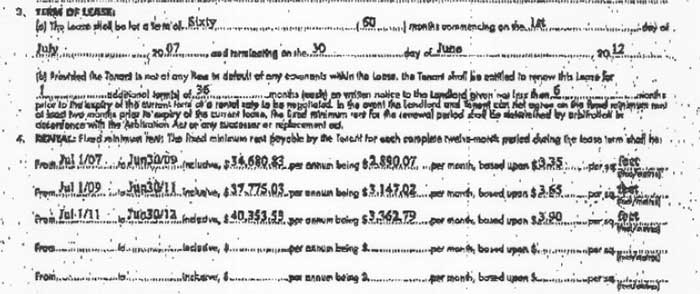
SaaS-based, commercial real estate investment software, on the other hand, allows multiple users to enter clear data that is immediately available to all relevant users. Moreover, your team benefits from standardized data input forms and consistent reports.
Better investment returns
Obviously, another primary outcome of all the business process improvements is ultimately to increase ROI for the company. This objective is easily achievable in conjunction with improved work systems for all the staff when using enterprise-level, dedicated business solutions.
The impact of increasingly sophisticated tenants
Landlords aren’t the only ones with access to large amounts of data. Tenants are increasingly switching to more intelligent business systems. Larger tenants that have desirable lease covenants use sophisticated lease analysis software. What’s more, they demand more transparency from landlords on the CAM cost allocations and calculations. Landlords that do not meet the requirements of these tenants will find a shrinking pool of tenants willing to do business with them. Landlords using commercial real estate investment software have the clear advantage.
Existing systems and sunk costs
You’ve made it this far in the reading and understand the case for better systems. But you purchased software licences for other systems. Although you haven’t been able to meet all of the objectives you had hoped for initially, you haven’t fully amortized those costs. Perhaps you should wait until those costs are used up?
The costs for anything unrecoverable are known as sunk costs. It is a fallacy to allow those costs to influence new decisions. They cannot have any impact on the future because the spent funds will not change now or later. Draw a line under them and start fresh in your decision process. All that matters now and going forward is whether a new system will have a positive outcome on the business or not.
The fears (you’re not the only one who has them!)
How much will it cost? Purchase cost and ongoing licencing fees
The initial cost of enterprise-level systems is a shock to many just starting in the quest for better business workflow. Financial cost considerations often overshadow the financial benefits so much that fear petrifies the buyer, or they turn to software that costs almost nothing upfront.
Software system costs vary greatly. Why does some software hardly cost anything, and others charge so much? The difference is in the capability to save or even make money through efficiency and sophistication. The case for business software is financial on one side offset by the significant ROI that purpose-built industry solutions for commercial property management can achieve.
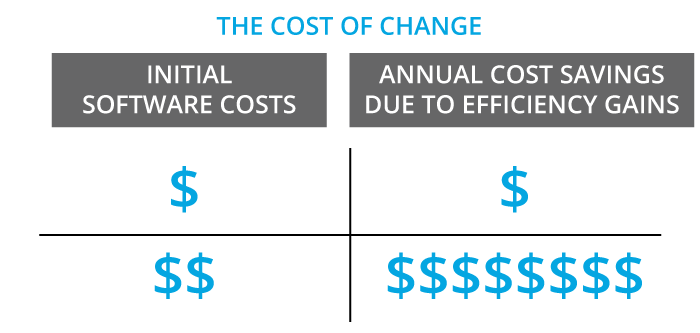
How do you know what you can achieve? For one thing, book a demo of the commercial real estate investment software. Indeed, do more than one demo and focus on each group of users to see the workflows and interaction between departments and management levels. Have your decision team see and understand how the system works for your specific case.
How hard is it to set up? Implementation, training and deployment costs
The fear here is that setup will require a serious time commitment from the existing staff who still have to use legacy systems while doing the setup work. Where will the extra hours come from? Will there be overtime wages? When can we schedule all the extra work? How much resistance will there be?
Resistance to change
Change across an entire organization is always difficult. While helpful implementation strategies such as these are useful to get employees on board, CRESSblue recommends getting people involved even sooner. In this way, change is a response to their feedback directly and enables a more fluid process. Furthermore, the staff sees management implementing change to suit the needs of its staff, rather than forcing change.
Implementation of change
Implementation, training and deployment are typically lumped together as setup. There is a push to market software products that require little or no setup. However, to achieve exceptional levels of automation, the business system needs to understand your business structure and its data relationships.
Once you have created a shortlist of workable systems, what will it take to deploy the solution? SaaS software systems have significant advantages over legacy boxed software. The provider does the deployment. You are not required to supply any dedicated, onsite hardware. Typically, SaaS solutions completely bypass the old-style software installation process and provide instant, encrypted access using your Internet browser.
Look for after-sales training options. Is personal training available, or are you left to dig through a user-created knowledge base? Getting adequate training is important for several reasons. First, training reduces user frustration and gets early buy-in from the staff. Second, it allows for an earlier realization of newfound workflow efficiencies. Third, those who launch into sophisticated systems without training often pull together a workflow that works, but that doesn’t fully utilize the most efficient workflows available.
Look for a company as committed to your success using their product as they are in selling it to you. Insufficient or ineffective training can cripple the launch of a new software system through user frustration. Merely purchasing a sophisticated system in no way determines its effective deployment and use.
How long will it take? Slow realization of initial goals
What if the system we try doesn’t work out for us? What if it costs a small fortune, takes a lot of effort to set up and then doesn’t meet our expectations?
Take a serious look at using professional setup and training services. While doing all the setup internally can be beneficial for training and familiarity with the new system, manually inputting historical data can be very tedious. See if software scripts can be provided to import much of the historical data into the new system. Of course, this assumes you have enough good quality data available in a useful format.
In summary, online software avoids all of the deployment headaches of traditional boxed software products. Taking advantage of training advances the implementation curve significantly. Together, these factors lead to more effective use of the system and earlier realization of returns on the technology investment.
How long do I have to sign up for? Commitment liability
Commitment isn’t really the issue here. No one worries about commitment when they like where they are. Asking about commitment is actually looking for an escape mechanism in case you made a serious mistake.
The question then becomes “How long will it take to realize if I made a mistake?” The uncertainty is the highest at contract initialization and decreases inversely with software familiarity. Make a definitive commitment to fully implement and deploy the software. Subsequently, within a few months, you will know whether it will work out. Look for a 3-month money-back guarantee in your contract.
Will this work with my other software? Integration problems
This is more or less important based on two questions. One, how many other software packages do you use? Two, how much will the new system replace older systems? Other factors include reporting to or integrating with external systems used by others, such as financial reporting tools.
Newer software systems are typically built with an integration layer that enables rapid and relatively painless programming to connect systems. Ask what other systems have already been integrated and get quotes on the integrations you require.
Is change really necessary? Uncertainty
Facing uncertainty in business often feels worse than sticking with the processes you know. This inertia can be useful as a hedge against too rapid change and gives stability to the company. However, too much inertia and the company will stagnate and fall behind nimbler competitors.
Inefficient responses, improper reporting documents and poor accounting records are evidence of stagnation. Small landlords are not impervious to this measure. Being small and self-contained does not insulate you from the competitive influences of growing tenant expectations. Businesses must invest in themselves or get left behind.
What if I look like I don’t know what I’m doing? Image and reputation
This one is a personal issue. An outside expert is going to look at my business? What if I have been doing things wrong? Won’t that make me look inadequate or incompetent?
First of all, taking steps to improve is the smartest thing a person can do. Bravo! No one has ever grown by hiding in ignorance. Step up, learn and be surprised by how quickly you can make improvements with modern business systems working for you. Secondly, if you were far behind, you have the most to gain. Moreover, you will realize your efficiencies faster than most. Get the tools to make the improvements you need to outflank the competition.
If you have progressed this far in business and life, you undoubtedly have what it takes to master enterprise business systems. They exist for people like you, in your situation. Software solutions have advanced tremendously. CRESSblue is an example of a very specialized system that brings something brand new to the table. You aren’t unique in your need for better software solutions. Knowing what needs to be done and not doing it is a fool’s path. Seeing room for improvement and advancing toward growth is the behaviour of the savvy and successful. You have what it takes to be successful. A big part of that is a hunger for continuous improvement and competitive advantage.
Addressing the fears (the solution is right here!)
Briefly, here are the main steps that alleviate the concerns of moving forward with new commercial real estate investment software.
Get informed
Research and discovery diminish change-induced fear. Utilize the sales team resources for your benefit. Get more details, get more demos. It’s their job to educate you on the possibilities and capabilities of their solution, so inquire to your satisfaction.
Demo and test
One standard demo will demonstrate the general use of any system. However, unique situations and process exceptions can break the workflow for the user. After the first demo, ask the other future system users to weigh in with their feedback. Schedule additional demos to see the functionality and workflows and how they address the atypical situations.
Mitigate the impact of change
Since early adoption of the new system is critical to its successful implementation, use the provided training resources. Get everyone using it effectively as quickly as possible. Concurrently, have the system provider run data import scripts as soon as possible. This step in effect informs the system on your business data relationships.
Avoid new risks
Have the system provider make the necessary software integrations for you. Avoid using workaround solutions as they destroy the efficiency you hoped to achieve. Awkward workarounds also lower user confidence in the new system.
Utilize newfound efficiencies quickly
Rapid deployment means reaching efficiency milestones sooner, and that means greater profitability. Minimize the initial hump as much as possible, and then cross it as soon as possible. With this in mind, fully commit to making the commercial property management system fully operational within the first three months.
The cost of not leaping
If you are looking for better property management software, there is obviously room for systems improvement. Delaying or declining the move to the right commercial real estate investment software can cost your company in many ways. Here are the top five risks faced by a commercial property management firm using outdated systems:
1. Lost revenue
Slippage is a significant source of direct income loss. Improper CAM calculations and missing expense recoveries immediately impact the bottom line. In reality, remedying slippage can, by itself, cover the cost of the entire software system and associated setup costs in the first year alone.
2. Disorganization
Lost documents, disjointed leadership activities and inattentive business management are symptoms of ineffective business systems. Dedicated, purpose-built enterprise business systems allow you to “get your stuff together” and keep it that way. So, replace “What the heck am I doing?” with “Check this out!”
3. No progress
Business systems have changed significantly in even just the last few years. If you are still using spreadsheets and individual independent employees, untapped efficiency gains exist. Improvements in workflows are one of the main reasons for using professional software.
4. Operating on assumptions
It is a point often overlooked, but if you do not have aggregated business information readily available, critical decisions stand on loose foundations. Basing big decisions on isolated data points and assumptions of past performance based on memory is risky. Get a complete picture of each property’s performance covering all aspects from asset purchase to capital expenditures to operational revenues, recoveries and losses.
5. No integration with partners
As a small business, you likely don’t have inhouse professional services. So then, what connects your outside legal, accounting, insurance, leasing and contracted maintenance services? You do. You hand responsibility from one profession to another. Your broker gets an offer to lease, and you give it to your lawyer for a lease agreement. If you are a careful landlord, you get your insurance broker to review the new tenant’s risks. Your bookkeeper does the daily accounting, and you hand the books off to the accountant to file your annual returns. At the centre of it all is you. It’s your responsibility to integrate all the information from everyone into a business plan and to act. Why deprive yourself of business tools you need to organize, cooperate and understand?
Purposeful striding
Given these points, it’s clear that there is a strong case for moving forward with modern business software, and that there are logical steps to resolving the associated fears.
Now we get to the heart of the matter. Insomuch as something needs to be done, and done quickly, the best advice is: Don’t leap at all.
That’s right. Don’t rush into anything. Plan. Prepare. Execute. It isn’t a question of leaping off a cliff and hoping you make it. A smart executive strides purposefully toward intended goals.
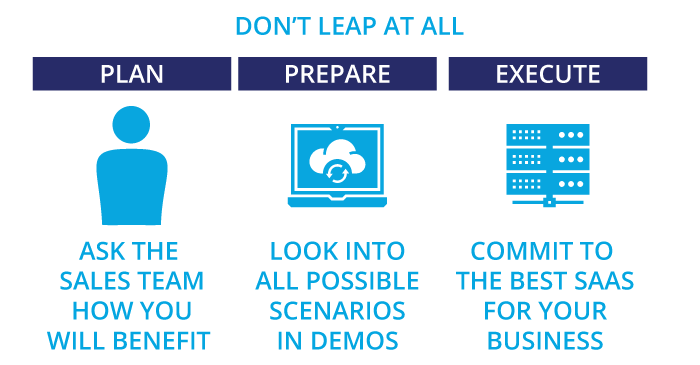
The timing is now
Change inevitably happens in the business environment, regardless of personal stagnation. Consequently, this will either force personal change or force you out of the industry. The only thing worth feeling embarrassment over is awareness of what needs to be done while doing nothing about it. To let critical opportunities for continuous improvement and competitive advantage slip you by. You know what to do. You know how to start. More importantly, you know you can do this.
Disclaimer
This article is for informational purposes only and is not intended as professional advice; please consult a competent professional for advice specific to you. This blog is written to stimulate thinking on concepts related to commercial leasing. Please join the discussion with your experiences.

Martin Sommer, CEO, CRESS Inc.
Martin is a founder and the CEO of CRESS Inc., a Canadian SaaS company that automates lease administration and asset management. Martin also manages Karanda Properties Limited industrial portfolio as Director of Operations in all areas of commercial property management, including new development, asset management, capital expenditures, operations, leasing and lease administration of the industrial portfolio. Martin writes about property management workflow and issues. Book Martin to speak at your industry event.

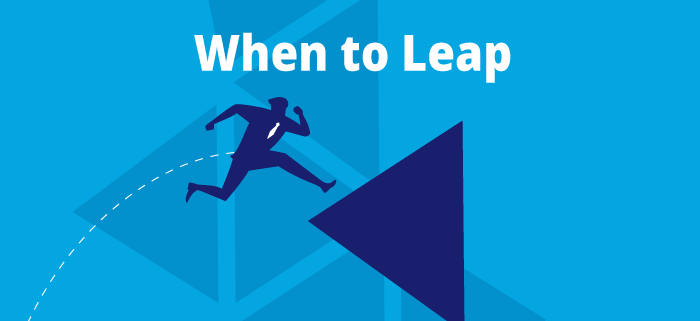
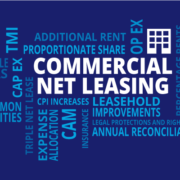
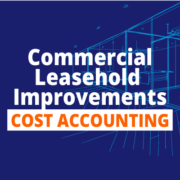
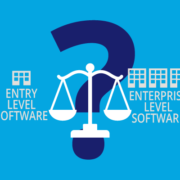

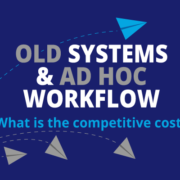



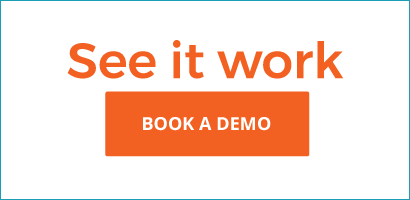
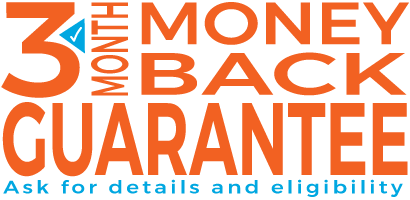


[…] managers have even more of an incentive to make the digital leap. Digital workflows can reduce overhead costs, speed up leasing processes and increase response time […]